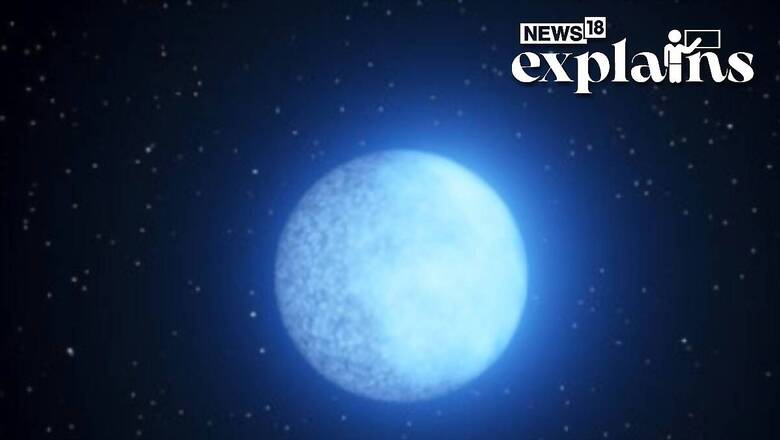
views
A remarkable discovery has left astronomers puzzled – a white dwarf star with two distinct faces, each composed of different elements.
Dubbed “Janus,” after the two-faced Roman god, this lone star is located over 1,000 light years away in the Cygnus constellation. Researchers, led by Dr. Ilaria Caiazzo from Caltech, made this intriguing finding using the Zwicky Transient Facility (ZTF), an observatory near San Diego, as per a report by Guardian.
Janus: A Star with Unusual Properties
Janus was singled out due to its rapid changes in brightness, and further observations revealed that the star rotates on its axis every 15 minutes. What sets Janus apart is the stark difference between its two sides – one side consists almost entirely of hydrogen, while the other is predominantly composed of helium.
If viewed up close, both sides would appear bluish, but the helium side would have a patchy appearance like our sun, whereas the hydrogen side would seem smoother.

“The surface of the white dwarf completely changes from one side to the other,” Dr Ilaria Caiazzo, an astrophysicist at Caltech said in the report. “When I show the observations to people, they are blown away.”
What is a White Dwarf?
White dwarfs are the remnants of stars that once resembled our sun.
As these stars age, they expand into red giants before shedding their outer material and contracting into dense white dwarfs.
Within a white dwarf, heavier elements sink to the core, forming a helium layer below a thin hydrogen layer. As the star cools, the helium layer bubbles, leading to the mixing and gradual disappearance of the outer hydrogen layer.
But Why is Janus So Different?
The initial discovery was made using the Zwicky Transient Facility (ZTF), a powerful sky-scanning instrument based at Caltech’s Palomar Observatory. The lead researcher, Dr. Ilaria Caiazzo, had been on the lookout for highly magnetized white dwarfs like ZTF J1901+1458, which her team had previously found using ZTF.
The baffling question remains: Why does this lone white dwarf in space have such starkly different faces? While the team is puzzled, they propose some possible explanations. One theory is that Janus might be going through a rare phase of white dwarf evolution, as per the Caltech report.
According to Caiazzo, not all, but some white dwarfs experience a transition from being hydrogen-dominated to helium-dominated on their surface. The team wonders if Janus could be one such white dwarf caught in the midst of this intriguing transformation.
After the formation of white dwarfs, their materials separate, with heavier elements sinking to the core and lighter elements, like hydrogen, floating to the surface. As they cool down, the materials are expected to mix, and in some cases, hydrogen gets diluted, making helium more prevalent. Janus may represent this transitional phase, but the mystery remains: why is this transition happening in a disjointed manner, with one side evolving before the other?
Magnetic Fields May Hold the Key to This Enigma
The scientists suggest that magnetic fields might hold the key to this enigma. Magnetic fields around celestial bodies often exhibit asymmetry, being stronger on one side. These fields can hinder the mixing of materials, meaning that if one side of Janus has a stronger magnetic field, it would experience less mixing and retain more hydrogen.
Another theory proposed by the team also involves magnetic fields, but in this scenario, the fields change the pressure and density of the atmospheric gases. The magnetic fields could lead to lower gas pressures, creating a hydrogen “ocean” where the magnetic fields are stronger.
To solve the mystery, the team plans to search for more Janus-like white dwarfs using ZTF’s sky survey, which excels at discovering unusual objects. Future surveys, like those performed by the Vera C. Rubin Observatory in Chile, are expected to make finding variable white dwarfs even easier, as per the report by Caltech.



















Comments
0 comment